Are you a Quiet Speculation member?
If not, now is a perfect time to join up! Our powerful tools, breaking-news analysis, and exclusive Discord channel will make sure you stay up to date and ahead of the curve.
It hasn't even been a full week since Twin got buried on the Modern banlist, and although Exarch is still mourning, it's time for players to buck up and dive into the new metagame. If you play paper Modern, the controversial January 18th announcement went into effect last Friday the 22nd. MTGO folks had to wait until today, January 27, to wave farewell (or good riddance) to the URx Twin pillar. Although we can't run a proper metagame update without major paper event Day 2 and Top 8 data, not to mention the missing MTGO Dailies and Leagues, I've amassed enough finishes from last weekend to offer an enticing preview of what is to come. In today's article, we'll get our first data-driven snapshot of the Twinless Modern metagame.
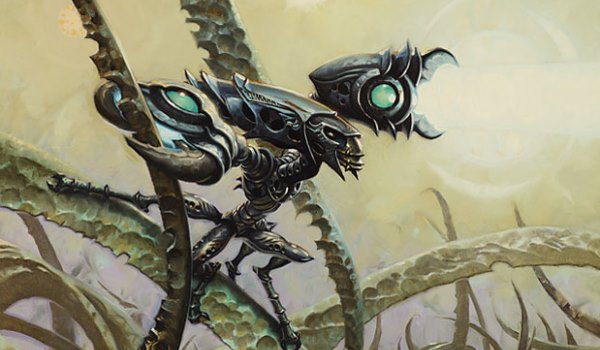
Modern players, professionals, and pundits have been theorizing about the post-Splinter Twin metagame since the update went live. Writing mere hours after Wizards posted the announcement (they expedited its release due to a MTGO Beta leak), ChannelFireball's Neal Oliver predicted a swell in Infect, Affinity, Bogles, and other unfair decks. He also identified Jund as a possible loser. Since then, other authors have sparred over whether the ban would open space for other decks or lead to a linear coup, with most agreeing on David's "Assumption 1" from yesterday's article: decks with bad Twin matchups get better. It's all been (mostly) educated guesswork so far.
Thankfully, I'm finally armed with a new batch of Saturday and Sunday finishes and ready to unpack the metagame with numbers and not just theory. Read on to see where the speculation went right, where it missed the mark, and overall how the new Modern metagame is taking form!
[wp_ad_camp_1]
Event Data Collection
Our Top Decks spreadsheet has been pining for data since the Twin banning: I've ignored it, knowing there was no reason to enter anything until we had post-ban statistics. Last weekend saw our first batch of 14 new events covering 126 Top 8 and Top 16 decks, all representing a Modern sans Twin. Sadly, we won't have MTGO data until Thursday, so the spreadsheet is going to have some gaping holes until then, but 14 events is more than enough to stake out early projections.
I'm filling in the gaps with some sweet field-wide data from two events. The first comes out of an 80-player Modern 2k hosted by MTG Card Market, an impressive Magic shop in my hometown of Chicago. Big shoutout to the folks at the Market for responding to my request for their data; you are Modern heroes! The second dataset is from the Dutch 4 Your Games Invitational circuit, which saw 44 participants on Sunday. These tournaments not only added Top 8s to the broader paper dataset, but also contributed complete Round 0 listings of who played what deck. By looking at both the paper field in Top 8 and Top 16 performances, along with the Round 0 metagame ledger, we'll get a holistic picture of how the format is shaping out. Naturally, all cautions about small samples apply, but it is much better to analyze an N=14 dataset than debate in an N=0 theoretical whiteroom.
Round 0 Metagame and Expectations
I consider us lucky if tournaments even give us a Day 2 metagame, although I've taken it for granted with Grand Prix events, Pro Tours, and Opens for much of 2015. Most of the time we're stuck on Top 8s. Top 16s too, if we're lucky. The fabled Day 1 metagame is unheard of in Grand Prix coverage: I think the last time we saw one at that tournament level was during Yokohama in June 2012. Pro Tours have featured them in the past but 2015's Fate Reforged event only gave us Day 2 data. Today's article breaks that mold, showcasing Round 0 metagames for two post-Twin paper scenes. Because these were single-day events, we don't have anything fancy like a Day 1 to Day 2 conversion breakdown. I also don't have final standings for all players and decks to track overall success rates by strategy. That said, this type of data is still incredibly valuable because it shows what average Modern players decided to bring to their first post-Twin tournament.
The table below identifies decks with 2+ showings at one individual event, or 2+ appearances total between both. This accounts for 87% of the combined fields. The remaining 13% made only singleton appearances at one tournament or the other, and they are displayed in a spoiler box underneath the table. Columns two and three separate the table data by event. Column four gives a merged share as a percentage of all strategies played in both tournaments combined. Examining all three of these divisions will help us notice variations between combined metagames and individual ones.
| Deck | 4YourGames | MTGCardMarket | Combined % |
|---|---|---|---|
| Affinity | 4 (9.1%) | 4 (5.6%) | 7.0% |
| Burn | 3 (6.8%) | 5 (7%) | 7.0% |
| RG Tron | 4 (9.1%) | 4 (5.6%) | 7.0% |
| Jeskai Control | 0 (0%) | 7 (9.9%) | 6.1% |
| Hatebears | 3 (6.8%) | 3 (4.2%) | 5.2% |
| Abzan Company | 3 (6.8%) | 3 (4.2%) | 5.2% |
| Grixis Midrange | 2 (4.5%) | 4 (5.6%) | 5.2% |
| Bogles | 1 (2.3%) | 4 (5.6%) | 4.3% |
| Eldrazi | 0 (0%) | 5 (7%) | 4.3% |
| Living End | 3 (6.8%) | 1 (1.4%) | 3.5% |
| Gruul Zoo | 3 (6.8%) | 1 (1.4%) | 3.5% |
| Griselbrand | 3 (6.8%) | 1 (1.4%) | 3.5% |
| Jund | 2 (4.5%) | 2 (2.8%) | 3.5% |
| Infect | 1 (2.3%) | 3 (4.2%) | 3.5% |
| Naya Company | 1 (2.3%) | 3 (4.2%) | 3.5% |
| Scapeshift | 1 (2.3%) | 2 (2.8%) | 2.6% |
| Merfolk | 2 (4.5%) | 0 (0%) | 1.7% |
| Ad Nauseam | 0 (0%) | 2 (2.8%) | 1.7% |
| Abzan | 0 (0%) | 2 (2.8%) | 1.7% |
| 4C Gifts | 0 (0%) | 2 (2.8%) | 1.7% |
| BW Tokens | 0 (0%) | 2 (2.8%) | 1.7% |
| Soul Sisters | 0 (0%) | 2 (2.8%) | 1.7% |
| Dredgevine | 1 (2.3%) | 1 (1.4%) | 1.7% |
As promised, here are the 15 decks that only managed a single appearance at only one of the two tournaments last weekend. Of the lot, only UW Control and Kiki Chord cracked the Nexus Tier 2 listings in 2015. The rest loitered around Tier 3 or lower (plus an unimportant tournament win here and there).
[su_spoiler title="The Rogue 13%" style="fancy" icon="arrow"]
Doran Abzan (4YourGames)
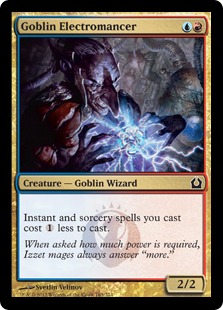 Faeries (4YourGames)
Faeries (4YourGames)
Mardu Midrange (4YourGames)
Esper Control (4YourGames)
Lantern Control (4YourGames)
UW Control (4YourGames)
Storm (4YourGames)
Jeskai Midrange (4YourGames)
RW Land Destruction (MTGCardMarket)
4C Goodstuff (MTGCardMarket)
Tooth and Nail (MTGCardMarket)
Jeskai Delver (MTGCardMarket)
Martyr Proc (MTGCardMarket)
Kiki Chord (MTGCardMarket)
Death Cloud (MTGCardMarket)
[/su_spoiler]
Again, I emphasize the need for caution in drawing conclusions from only two relatively isolated (and entirely independent) fields. We can mitigate these dataset limitations by treating the tournaments as case studies to illustrate overarching format narratives, not just small N datasets to cycle through some T Tests. Following this approach, there are a few broader themes we can identify that will help you navigate the post-Twin world.
Theme 1: Overwhelming Diversity
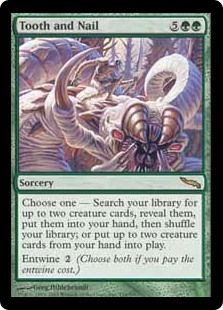 Do you get lost scrolling through the table above? Feeling adrift in this diffuse new field? Excellent! You understand our first finding: the new Modern is staggeringly diverse at a local level. This doesn't even count the additional decks comprising the Rogue 13% that poked up last weekend. You're playing a perilous game if you try to Next Level and metagame in such an environment. There are simply too many potential opponents. Even if you wrangled together 75 cards with a positive Affinity, Tron, and Burn matchup, you still might hit nothing but Ad Nauseam, Abzan, Bogles, Eldrazi, and Scapeshift all day long. And that assumes you dodge oddballs like Tooth and Nail (hopefully with original Mirrodin art), Mardu Midrange, and RW Land Destruction. Don't fall into this trap.
Do you get lost scrolling through the table above? Feeling adrift in this diffuse new field? Excellent! You understand our first finding: the new Modern is staggeringly diverse at a local level. This doesn't even count the additional decks comprising the Rogue 13% that poked up last weekend. You're playing a perilous game if you try to Next Level and metagame in such an environment. There are simply too many potential opponents. Even if you wrangled together 75 cards with a positive Affinity, Tron, and Burn matchup, you still might hit nothing but Ad Nauseam, Abzan, Bogles, Eldrazi, and Scapeshift all day long. And that assumes you dodge oddballs like Tooth and Nail (hopefully with original Mirrodin art), Mardu Midrange, and RW Land Destruction. Don't fall into this trap.
Theme 2: Popular Theory Can Fall Flat
Before this weekend, common wisdom suggested new URx strategies might surface to assume Twin's old shares. Jeskai Control rose to that challenge in Chicago, Cryptic Commanding 9.9% of the MTG Card Market field. Across the Atlantic, however, the URx successor made literally 0 showings. Jeskai also petered out in Chicago, sending none of its pilots to the Top 8. Popular theory also 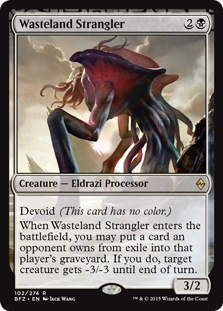 suggested Bx Eldrazi would wreak so much havoc on Modern that Wizards needed to emergency ban Eye of Ugin before January 22nd came around. Although Eldrazi slithered to a 7% share in the Windy City, the Dutch Great Old Ones put up a fat 0%. Part of the gulf is undoubtedly due to player differences between MTG Card Market (80) and 4 Your Games (44). But that's precisely the point: many of us attend smaller tournaments where this variance plays a huge and underappreciated role.
suggested Bx Eldrazi would wreak so much havoc on Modern that Wizards needed to emergency ban Eye of Ugin before January 22nd came around. Although Eldrazi slithered to a 7% share in the Windy City, the Dutch Great Old Ones put up a fat 0%. Part of the gulf is undoubtedly due to player differences between MTG Card Market (80) and 4 Your Games (44). But that's precisely the point: many of us attend smaller tournaments where this variance plays a huge and underappreciated role.
As we'll see in the more comprehensive metagame analysis, a deck like Eldrazi is still putting up respectable numbers across the amorphous, Modern-wide board (Restoration Angel, not so much). Broader metagame aside, be very careful in making these assumptions at the local, 30-60 player level many of us are a part of. Not every field looks like a Grand Prix Day 2 (let alone a Pro Tour Day 2)! This caution is something we don't talk about a lot in our metagame breakdowns but is more pressing than ever in this unusually open Modern.
Theme 3: Differences Aside, there is Common Ground
For skeptical analysts, experienced Modern players, and cynical readers, it comes as no surprise that relatively small events like these will produce yawning differences. It might come as a much larger surprise, however, that their fields actually have a lot in common. Using this data, I want to highlight shared strategies between tournaments, suggesting a Modern-wide core we'll need to expect in subsequent weekends.
To account for regional differences, a small sample size, and variance between given events, I've filtered the above table to only include the more consistent appearances. I've defined these contenders as decks meeting two criteria. First, they must have 1+ showing at both events, not just 2+ overall. Secondly, their share at any given event cannot be lower than the average share among decks at all events. These parameters halved the Round 0 list to 12 strategies down from 24. I've pulled them out of the above table to highlight below:
| Deck | 4YourGames | MTGCardMarket | Combined % |
|---|---|---|---|
| Affinity | 4 (5.6%) | 4 (9.1%) | 7.0% |
| RG Tron | 4 (5.6%) | 4 (9.1%) | 7.0% |
| Burn | 3 (4.2%) | 5 (11.4%) | 7.0% |
| Hatebears | 3 (4.2%) | 3 (6.8%) | 5.2% |
| Abzan Company | 3 (4.2%) | 3 (6.8%) | 5.2% |
| Grixis Midrange | 2 (2.8%) | 4 (9.1%) | 5.2% |
| Living End | 3 (4.2%) | 1 (2.3%) | 3.5% |
| Gruul Zoo | 3 (4.2%) | 1 (2.3%) | 3.5% |
| Griselbrand | 3 (4.2%) | 1 (2.3%) | 3.5% |
| Jund | 2 (2.8%) | 2 (4.5%) | 3.5% |
| Infect | 1 (1.4%) | 3 (6.8%) | 3.5% |
| Naya Company | 1 (1.4%) | 3 (6.8%) | 3.5% |
Looking solely at what decks people brought to the tournament, these are the 12 strategies I would be prepared to face. Put in reps against these and you'll be ready to rock against about 60% of the field on a given day. That said, and to steal my own thunder from the following section, these aren't the consistent winners in the current Modern field. These are only Round 0 strategies. These are the decks players sleeved up and registered, with no consideration given to their eventual clawing into the Top 8. Although you'll certainly want to brace yourself for those high-profile Top 8 and Top 16 challengers, you'll also need to expect these 12 decks en route to the big leagues. In essence, these are strategies people thought would be well-positioned going into the event. Moderners on both sides of the globe agreed these were smart places to be, and you can bet other pilots will follow that logic in selecting decks at smaller and mid-size tournaments.
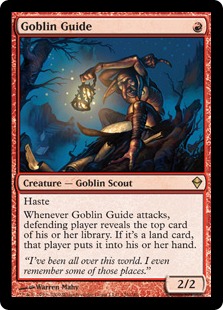 From a deck perspective, this field heavily reflects the so-called Assumption 1 everyone has made as they enter into the new Modern. Affinity feels very safe. RG Tron too, although competing metagame forces might work against it at higher tables. Some players made tight metagame calls with trusty Jund and old school Hatebears (which is probably a misclassified Death and Taxes, but I don't have lists to check), although most just went linear. Indeed, the overwhelming majority (~67%) of these 12 decks fall somewhere on the linear gameplan spectrum, with only Jund, Hatebears, Grixis Midrange, and Abzan Company moving into more interactive territory. Even if you migrate Living End and Naya Company into the linear camp, you're still looking at an expected Round 0 field where 53%+ of your decks are solidly linear. We'll explore this linear tendency more in the next section.
From a deck perspective, this field heavily reflects the so-called Assumption 1 everyone has made as they enter into the new Modern. Affinity feels very safe. RG Tron too, although competing metagame forces might work against it at higher tables. Some players made tight metagame calls with trusty Jund and old school Hatebears (which is probably a misclassified Death and Taxes, but I don't have lists to check), although most just went linear. Indeed, the overwhelming majority (~67%) of these 12 decks fall somewhere on the linear gameplan spectrum, with only Jund, Hatebears, Grixis Midrange, and Abzan Company moving into more interactive territory. Even if you migrate Living End and Naya Company into the linear camp, you're still looking at an expected Round 0 field where 53%+ of your decks are solidly linear. We'll explore this linear tendency more in the next section.
Early Round vs. Top Tables
As a whole, the notion of a Round 0 metagame can be very helpful if managed carefully in testing and deck selection, but deeply harmful if misread. Given the nature of this species of data, which Wizards generally doesn't make public, we can't draw too many quantitative conclusions from these numbers. It would be foolish to look at these two tournaments and expect Affinity to be a flat 7% of all other events too. That said, in assessing relative magnitudes between deck shares, and in remembering the overarching themes mentioned above, we can use this data to help us know what to expect (and what not to expect) at all stages of a tournament. As Modern develops more, these Round 0, Assumption 1-style metagame pictures become less helpful. But in this more open phase of Modern realignment, they help anchor us in what the everyman Moderner is up to.
Early Top 8 and Top 16 Picture
Now that we know what people are bringing to tournaments, we can figure out what is actually winning. This next section draws from the 14 events and 126 finishers gathered over last weekend. Like previous metagame breakdowns, I'm aggregating those finishes to create a descriptive, prevalence-based estimate of what decks are appearing in tournament Top 8s. Unlike in your conventional Modern Nexus metagame analysis, I won't be worrying too much about tiering. Although the spreadsheet is hard-coded to tier decks based on their metagame share, it's too early to generalize those rankings into actual Tier 1 and Tier 2 divisions.
The table below shows all the decks currently passing either Tier 1 or Tier 2 benchmarks with our limited sample size. In addition to their metagame-wide share, I also add their Round 0 prevalence as a point of comparison. The final column checks whether any given deck also showed up as a regular Round 0 decks in the "Theme 3" section's table. We can use this binary variable to see which decks are truly common in the new Modern, which decks might be overrepresenting in Top 8s, and which decks could be underperforming relative to theoretical Round 0 presence.
| Deck | Meta % | Round 0 % | Round 0 Regular? |
|---|---|---|---|
| Affinity | 12.5% | 7% | Yes |
| Burn | 8.6% | 7% | Yes |
| Abzan Company | 6.2% | 5.2% | Yes |
| RG Tron | 5.5% | 7% | Yes |
| Jund | 5.5% | 3.5% | Yes |
| Merfolk | 5.5% | 1.7% | No |
| Eldrazi | 5.5% | 4.3% | No |
| Infect | 4.7% | 3.5% | Yes |
| Elves | 3.1% | 0% | No |
| Storm | 2.3% | 0.8% | No |
| Death and Taxes | 2.3% | 5.2% | Yes |
| Ad Nauseam | 2.3% | 1.7% | No |
| Griselbrand | 2.3% | 3.5% | Yes |
| Naya Company | 2.3% | 3.5% | Yes |
In keeping with the spirit of spotlighting rogue finishes, here are the decks currently scoring a Tier 3 rating on our Top Decks page. I'm not including them on the table above due to lower shares, but don't count them out of the Modern fight yet! Any of these decks could still make waves in the weeks to come.
[su_spoiler title="Top 8/16 Fringe" style="fancy" icon="arrow"]
UR Delver (1.6%)
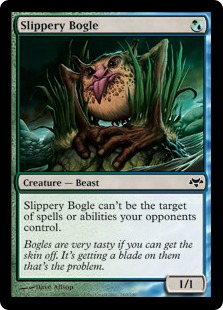 Bogles (1.6%)
Bogles (1.6%)
Living End (1.6%)
Gruul Zoo (1.6%)
Kiki Chord (1.6%)
Titan Shift (1.6%)
Temur Delver (1.6%)
Grixis Control (1.6%)
This list excludes decks with solitary appearances at single events. Examples of such decks include more mainstream offerings like Scapeshift, Jeskai Control, BW Tokens, Abzan, and Grixis Midrange, as well as offbeat journeymen such as Goblins, Cheeri0s, Death Cloud, and Jeskai Black.
[/su_spoiler]
Reviewing the above decks and situating them alongside the Round 0 field, we notice a few consistent performers and overall Modern motifs. We'll continue the theme list we started in our first section: even though we've added data to the Modern narrative, all our earlier takeaways are still at play.
Theme 4: Yes, Linear Decks are Strong
The Top 8 field points to an unsurprising confirmation: linear decks are roughly as strong as many suspected they would be. This is clearest in 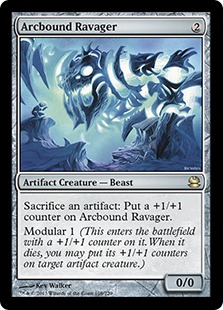 the fourth column of the table where we track the overlap between Top 8 and Round 0 datasets (for instance, here's the Top 8 at MTG Card Market). RG Tron, Burn, Infect, Grishoalbrand, Naya Company (depending on how linear you make that deck out to be), and Affinity all emerge as commanding frontrunners in the new Modern. Especially Affinity, which was tied for first in the Round 0 dataset and is about 4% ahead of the next competitor (Burn) in the Top 8/Top 16 metagame. This undoubtedly reflects both the actual strength of Affinity in a Twinless metagame, and also its perceived strength by players whipped into a panic by the robots' theoretical power in the new Modern. Because the format is still evolving, and because the upcoming Theme 5 is very much present, don't be too nervous about this linear uptick, but do prepare to face it in the approaching weeks.
the fourth column of the table where we track the overlap between Top 8 and Round 0 datasets (for instance, here's the Top 8 at MTG Card Market). RG Tron, Burn, Infect, Grishoalbrand, Naya Company (depending on how linear you make that deck out to be), and Affinity all emerge as commanding frontrunners in the new Modern. Especially Affinity, which was tied for first in the Round 0 dataset and is about 4% ahead of the next competitor (Burn) in the Top 8/Top 16 metagame. This undoubtedly reflects both the actual strength of Affinity in a Twinless metagame, and also its perceived strength by players whipped into a panic by the robots' theoretical power in the new Modern. Because the format is still evolving, and because the upcoming Theme 5 is very much present, don't be too nervous about this linear uptick, but do prepare to face it in the approaching weeks.
Theme 5: No, Interaction is not Dead
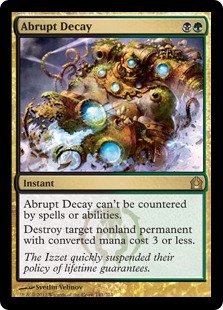 Despite a surge in decks trying to goldfish their way to victory, some of the more midrangey, interactive strategies are still alive and kicking. Jund saw as much play as RG Tron over the weekend. Abzan Company, a deck some will erroneously argue as combo, took the Modern bronze as the third most-played deck across all 14 tournaments (at least, using Top 8s as an indicator). Death and Taxes (not Hatebears) brought up the rear in the 2%-3% range, right around Grishoalbrand and Naya Company. These datapoints suggest the tales of interaction's demise have been mightily exaggerated. Don't commit headlong to linear decks just because Reddit tells you to. Today's numbers suggest a number of interactive strategies are much more viable than originally appraised.
Despite a surge in decks trying to goldfish their way to victory, some of the more midrangey, interactive strategies are still alive and kicking. Jund saw as much play as RG Tron over the weekend. Abzan Company, a deck some will erroneously argue as combo, took the Modern bronze as the third most-played deck across all 14 tournaments (at least, using Top 8s as an indicator). Death and Taxes (not Hatebears) brought up the rear in the 2%-3% range, right around Grishoalbrand and Naya Company. These datapoints suggest the tales of interaction's demise have been mightily exaggerated. Don't commit headlong to linear decks just because Reddit tells you to. Today's numbers suggest a number of interactive strategies are much more viable than originally appraised.
Although we'll certainly need more data to fully confirm or reject Theme 5's longevity, it's a promising trend in this new format.
Theme 6: Beware the Outliers!
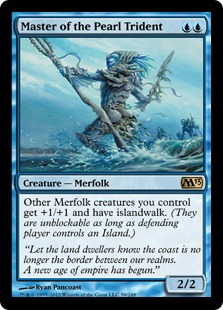 Discerning readers will notice Merfolk's and Eldrazi's absence from Themes 4 and 5. If you played at the MTG Card Market tournament, however, you might have seen at least five of Cthulhu's Bx brood stomping around the tables. A BW version even made it into the Top 8 before succumbing to Ad Nauseam in the quarterfinals. Similarly, although Merfolk was relatively unseen in our earlier Round 0 listings, the fish performed much better at a metagame-wide level. Both decks sit at 5.5% alongside Jund and RG Tron and are sure to define the format going ahead. Similarly, Elves had a 0% goose egg in the Round 0 sample, but Lead the Stampede to a 3.1% share overall.
Discerning readers will notice Merfolk's and Eldrazi's absence from Themes 4 and 5. If you played at the MTG Card Market tournament, however, you might have seen at least five of Cthulhu's Bx brood stomping around the tables. A BW version even made it into the Top 8 before succumbing to Ad Nauseam in the quarterfinals. Similarly, although Merfolk was relatively unseen in our earlier Round 0 listings, the fish performed much better at a metagame-wide level. Both decks sit at 5.5% alongside Jund and RG Tron and are sure to define the format going ahead. Similarly, Elves had a 0% goose egg in the Round 0 sample, but Lead the Stampede to a 3.1% share overall.
Although today's data analysis does not find sufficient evidence to rank these decks alongside Jund, Burn, Affinity, and RG Tron, we have more than enough datapoints to suggest they can get there. You should expect these strategies at tournaments and prepare for them in your tests. You should also be on the lookout for similar decks to worm out of the woodwork as the field continues to emerge. For example, Ad Nauseam and Storm could be very well positioned in the format.
Where is URx?
Speaking of the discerning readers, many of you will have noticed a potentially alarming, possibly relieving, lack of URx decks in these listings. Indeed, a quick glance at the table earlier in this section shows not a single URx deck in those Top 8/Top 16 fields. We do see many more of them in the "Fringe" spoiler breakout, but this is hardly the URx renaissance Wizards hoped for in banning Splinter Twin. Given that this was explicitly cited as a reason to ban Twin in the first place, this might be cause for worry. Or panic! Or RAAGE!
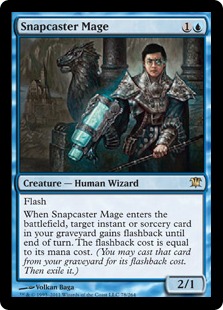 For now, let's make a collective Feat of Resistance to stay positive. Many players are still looking for the optimal URx configuration. Many more have bought into the narrative of a URx downfall and packed away their Snapcaster Mages. Once we smooth over these early format shocks, I'm confident we'll see more URx decks fill in the gaps. Last weekend already saw early indicators of a blue-red comeback! This included Nicholas Bruno's Jeskai Control list seizing first at an SCG IQ in Columbus, a Top 8 Kiki Control finish Nikolin Lasku in a 116-player Italian Magic League tournament, and, of course, Todd Anderson's Temur Delver win at the Atlanta Classic. Keep testing, stay optimistic like these players, and don't buy into popular frenzies until we get more data.
For now, let's make a collective Feat of Resistance to stay positive. Many players are still looking for the optimal URx configuration. Many more have bought into the narrative of a URx downfall and packed away their Snapcaster Mages. Once we smooth over these early format shocks, I'm confident we'll see more URx decks fill in the gaps. Last weekend already saw early indicators of a blue-red comeback! This included Nicholas Bruno's Jeskai Control list seizing first at an SCG IQ in Columbus, a Top 8 Kiki Control finish Nikolin Lasku in a 116-player Italian Magic League tournament, and, of course, Todd Anderson's Temur Delver win at the Atlanta Classic. Keep testing, stay optimistic like these players, and don't buy into popular frenzies until we get more data.
More Metagame Evolutions to Come!
The focused data analysis in today's article should give you firm footing into the coming weeks, at least until those Pro Tour players gum up the works. That said, we need to 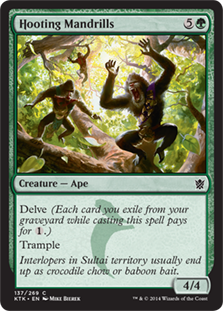 exercise caution in viewing today's metagame evaluation like we view the regular Nexus updates during more stable periods. Fluctuations are inevitable in this dynamic Modern context. Perception becomes reality, changing formats from weekend to weekend or even day to day. As an example of this, URx Delver enjoyed very modest success at the weekend-wide tournament level, holding down a mere 3% of the format in all its combined iterations. And yet, Anderson's well-publicized Temur Delver finish at last weekend's Classic might suddenly shift everyone to Hooting Mandrills and the deck's namesake bugman. I'm sure Jordan will do everything in his power to make that a reality! This isn't to say Anderson's finish is an anomaly or that URx Delver is good or bad. It's simply to point out that public reaction to his win will influence next weekend's field as much or more than what decks are actually tested in the metgame. We are going to lack that information for some time, but this is a helpful start.
exercise caution in viewing today's metagame evaluation like we view the regular Nexus updates during more stable periods. Fluctuations are inevitable in this dynamic Modern context. Perception becomes reality, changing formats from weekend to weekend or even day to day. As an example of this, URx Delver enjoyed very modest success at the weekend-wide tournament level, holding down a mere 3% of the format in all its combined iterations. And yet, Anderson's well-publicized Temur Delver finish at last weekend's Classic might suddenly shift everyone to Hooting Mandrills and the deck's namesake bugman. I'm sure Jordan will do everything in his power to make that a reality! This isn't to say Anderson's finish is an anomaly or that URx Delver is good or bad. It's simply to point out that public reaction to his win will influence next weekend's field as much or more than what decks are actually tested in the metgame. We are going to lack that information for some time, but this is a helpful start.
Thanks for reading and I hope you enjoyed our preview of the unfolding Twinless Modern metagame. We'll keep checking in on how things play out in the following weekend, and I'll be back next week to make some projections about how the Pro Tour field might evolve out of this ever-shifting metagame. What do you think of the different themes and takeaways from today's analysis? Do you have any observations of your own from last weekend? Want to share any tech or ideas as we head into Saturday? As Trevor is going to talk about tomorrow, it's a brave new Modern world, and we should all be excited to see where things lead.
Correction (1/27): An earlier version of this article incorrectly calculated percentages for decks. This has since been adjusted.




Since Twin banning I’ve been lurking in modern discussions and everywhere people said they think of playing Delver now on. I guess, it’s the best place you can put Snap-Bolt buddies.
Yes Delver is an obvious frontrunner to be the most popular home for BSB (bolt snap bolt). The problem is that the card Delver of Secrets, while potentially powerful, is just inconsistent in modern. I feel like it will always be playable but hovering in the tier 2-3 range. That’s fine, but the spikey blue mages out there who want better than that are still left wanting.
There’s this notion out there that Delver is bad and unplayable. It was always decent! Many considered it a solid Tier 1.5 deck before Khans sent them on a cruise, though it was usually an entry-point for blue players while they picked up pricier staples for Twin or Jeskai Control (back when mana was the most expensive part of a deck).
Delver of Secrets definitely loses consistency without casting brainstorm on your upkeep, but the deck itself has a proactive gameplan with reactive soft permission. This is another deck that seemed to lose out to Twin’s more consistent “Oops, I win” moments, which probably took a lot of spikes with it.
A Delver style deck certainly seems likely, though the successful lists I’ve seen so far are more UR Prowess than traditional Delver. The open question for that deck, though, is if it’s really just a bad Burn deck. Snapcaster and Bolt remain strong, it’s just a question of whether midrange-control or aggro is better.
Delver has great positioning right now and I expect we see more of it as the format unfolds. This should be especially true with Todd’s finish last week, which will undoubtedly inspire more players to go the Delver path. I don’t know if we’ll see a Tier 1 Delver any time soon, but Tier 2 should be very attainable.
If you really want a good blue deck, play Merfolk. I’m having good results with it. It’s lineair but interactive and really does well against the majority of decks if you prepare your sideboard right. Even Affinity, which used to be the worst matchup for the deck is beatable these days – Harbinger really does solid work and with the right sideboard hate and aggressive mulligans you will win against them. The last two GP Trials I’ve made top 8 with it (one is the 4YG Event of which the data was examined for this very article) and I’d say I’m just an average player so that’s testament to how good the deck currently us.
As for Delver decks I agree w/ the viewpoint of not having the card selection to make Delver consistently work. Even with a high density of Spells you sometimes just sit there turn after turn w/ your 1/1 for 1. The playability of the card in Modern in my view is nowhere near how good it is in Legacy.
Taking this data with a grain of salt.
In paper events, people are much more likely to bring whatever deck they have available and/or are comfortable with.
Most people don’t have the time/resources to completely change their modern deck within a short period of time and modern, as a whole, is a format where knowledge of your deck and matchups counts a lot.
Guess we’ll only have more solid data a few weeks after the pro tour.
Plenty of article disclaimers are given about how this data needs to be taken with a grain of salt. That said, it is significantly more helpful to talk about actual events (regardless of some limitations) than spinning our wheels in theoryland. The Pro Tour is definitely going to shake things up (or confirm what we already have), but we aren’t just going to stop all metagame analysis until the pros do their thing. People have tournaments to attend both this weekend and the weekend of the PT!
100% Agree. My only deck was Twin before the banning, and I plan on playing at regionals. Having an understanding of the metagame so I know what deck to borrow is still important. I’ll make my decision on what I want to trade into after the PT, and the format settles down. This article was very helpful in learning what I need to be prepared for
Is there any way we can get decklists from any of the tournaments listed, such as the Modern 2k?
I also want to say thank you for the articles and data, I always love visiting this site for the amazing content!
BW eldrazi player here, heres the top 8 deck lists from the 2k
https://www.facebook.com/notes/mtgcardmarketcom/modern-2k-top-8-decklist/726542487476670
Great job at the event! I actually thought I had posted that link as a hyperlink in the article, but now I see I must have removed it while editing. I’m putting it back in for all to absorb.
Thank you, appreciate the shout out to my report on reddit as well, didn’t notice that at first glance.
Thank you! And congrats on the finish!
The top8 decklist for the 4yourgames invitational can be found here: http://www.kvdeckmasters.org/Forum/index.php?PHPSESSID=7r7qtf924chisgbsivg6kfkc92&topic=17870.msg303995;topicseen#new
The venue took place in the Netherlands and not in Denmark 😉
keep up the good work
All the decklists for stuff like this can typically be found in the Top Decks spreadsheet. Here’s the T8 for both events:
Modern 2K: https://www.facebook.com/notes/mtgcardmarketcom/modern-2k-top-8-decklist/726542487476670
4YourGames: http://www.kvdeckmasters.org/Forum/index.php?PHPSESSID=pl77gg7apjigav77d7gag9bnd4&topic=17870.0
I expect UR Delver to be the best Snap-Bolt Deck for the next couple of weeks until somebody figures out a road to head on. Stormchaser Mage is a effective new tool whose power just has to be determined.
Was secretly hoping for 4c Gifts to win the event, is it possible to get access to those lists?
It’s also interesting to see that while meta predictions get very complex, sometimes, at a more local level, things barely change. Aside from the guys who lost Twin, I don’t think most people could even change decks to a better metagame choice. So, while round 0 values are still very interesting, we must still wait for more top finishes.
The sneaky sans was the icing on the article!
Unfortunately, I don’t have all the lists for all the events, but you can definitely message the TOs for any of the tournaments to see if they would share.
I too am excited to get more finishes. We should have a bunch more for next week, just in time for Regionals and to make some projections about the PT.
Who would have predicted an Affinity and Tron meta in the absence of Twin – WOTC has truly shaken up the format and provided a healthy format for all of us – where’s Jordan and and his buddy Trevor to chime in with “defence of the Twin ban’ comments – hmm no where..
I think it’s too early to call foul on the post-Twin metagame, but early signs certainly point to the linear uptick many feared. I’m confident we’ll see some self-correction in the next months (Modern is pretty adaptive and good at responding to all but the most broken decks), even if the overall tendency will be towards more linear options.
Interesting article, however, unless I’m reading something incorrectly, all of your meta game percentages are incorrect, due to transposing the number of participants in each event. For example, if 7 participants of the 80 person Mtg Card Market event were on UWR control, the meta share should be 8.8% rather than the reported 15.9%.
Great catch. You are totally correct: something transposed incorrectly in the Excel spreadsheet and repeated here when I pasted in the data. This has been corrected. Thanks for pointing this out and sorry for the confusion (also, the dataset for MTGCM only has 71 decks even though there were 80 players).
So an interesting thing I noticed at the SCG Classic in Atlanta is that there was a large portion of round 0 tron players but they were all absolutely crushed out of the top 32. Most of the tron players were x-3 by round 5 including a couple of very skilled players I personally know. I found out personally in the semi-finals out impressive Todd’s list was with all of his phyrexian mana. I had previously been undefeated against he RUG delver deck until last Sunday.
Very interesting. It’s too bad SCG doesn’t publish that kind of data, because I would love to see more data about Tron’s collapse en route to the finals. Did you happen to play the deck yourself? And do you have a sense of how many other people were on it, even if only an estimate?
I would say between 8-15 people on tron. The last one i saw at the x-0 tables was round 4 where he lost to the merfolk player in 12th place. He was the only one left to play for tpp 32 but i didnt follow up to see if he won. I played 0 trons sunday but im confidant i was the last fish list they wanted to see.
My matches were in order: BW tokens, grishoalbrand(guy in top 16), infect, bw midrange(great local atl player), burn, affinity(patel in the top 8 only loss in swiss), infect. Top 8 was burn then todd where i got crushed.
these are anecdotal from just jamming a lot of games online and perusing league finishes but my observations…
-affinity is going to be the most played deck by far.. burn is probably close behind.. and unless jund can fight off the big mana guys i can see it remaining that way…
-white in the form of hatebears/death n taxes is also a major presence… certainly alot more than before… i mentioned this previously but i think ppl are turning to white for PtE and the sideboard hate to control the linear strategies since they revolve around a theme that white can hate on really well.. i think with some more tuning you might see it reach T1 since it has game against a lot of the popular decks now…
-blue just sucks… delver won a tourney but it’s high variance and i can’t ever see it being too popular given how dependant it is on a card that might never flip… i don’t see this changing unless these through the breach decks are for real….
1. Agree that Affinity will be present, but also think it is far more vulnerable to hate than many acknowledge. It shouldn’t pull too far ahead before being reined in by sideboards and other decks.
2. Would love to see more Hatebears/D&T in Modern! This is the kind of interactive, policing deck which is almost unambiguously a net positive for the format. Tier 2 should be an easy achievement for the decks.
3. I still think we can see some blue decks succeed, whether Delver, Merfolk (not really control but still very well-positioned), or some control successors. If not, Wizards has a great opportunity to follow through with an AV unban.
I LIKE the MM art of Tooth and Nail :(…
It’s not bad! I just played a lot of Magic in 2004-2005, so the old arts are always my favorite.
way to early to make any meta game assumptions. everyone i know who was on twin are left with essentially their B deck. Its not like they could sell and re-invest their twin pieces. most people are left with 12 cards which went from $40 in value to less than $5.
The article gives extensive disclaimers about interpreting this kind of data in an early context when we don’t yet have all the events. That said, it is still very useful to give early projections about where things are going, even if some might get challenged as players adapt to the new format. It’s much better to discuss the actual results instead of just theorizing about what may or may not be appearing (and better to talk about as many events as possible instead of just one!).
Thanks for mentioning 4YourGames! I’m the guy running the tournaments there, Holland has a very active & aggressive Modern community that constantly adept to meta shifts – if you want I can give you a message after each rapport to keep track of the overall meta here.
Hey Charly! Great to hear from one of the 4YourGames crew. Would love to talk more about this via email. If you’re interested, shoot me a message at sheridan@quietspeculation.com. Thanks for putting up such great events every week!
fyi, this article is not visible on the front page
Odd. I see it in both the scrolling bar, the feature image section, and the list of articles. Checked it in two browsers too.
probably something strange with my cache not updating. i do see it now though, as well as today’s article, thanks.
Wizards must be looking at this meta and thinking to themselves
“We finally did it – we have created the world’s first two player solitaire game”
I unfortunately don’t share your optimism regarding interactive strategies. As the meta numbers start becoming more clear – I’m sure we’ll see more and more linear decks come in as the interactive decks just lose to their own stumbles and players figure it’s better to join them rather than beat them.
I took D&T to my FNM, you’re at the mercy of your library as your cards come with little way to control them. Meanwhile the linear decks are just drawing different versions of the same thing each turn. When you come right – it’s marvelous. When you’re on a mull to 5 and you still haven’t seen the bear you need to fight – it’s awful.
It’s a matter of consistency – and I don’t the police have it any more. Not once the Serum Visions deck got banned.
The results did suggest Jund might be worth trying – and I’ll be giving that a go going forward. Maybe it can be the hero Modern deserves (again). But if I had the deck – I’d be playing Infect in this meta.
So I attended the event below at South Saint Paul, MN and we had a solid turnout of 114 players to the new format. I’m sure the skill level isn’t on par with that of Atlanta but I thought some extra data might be appreciated.
http://mtgdecks.net/events/view/25331
Actually, that event IS included in this data! It was one we added earlier this week before writing the article and while updating the spreadsheet. Great results though! Love the Ninja Bear and the Death and Taxes!